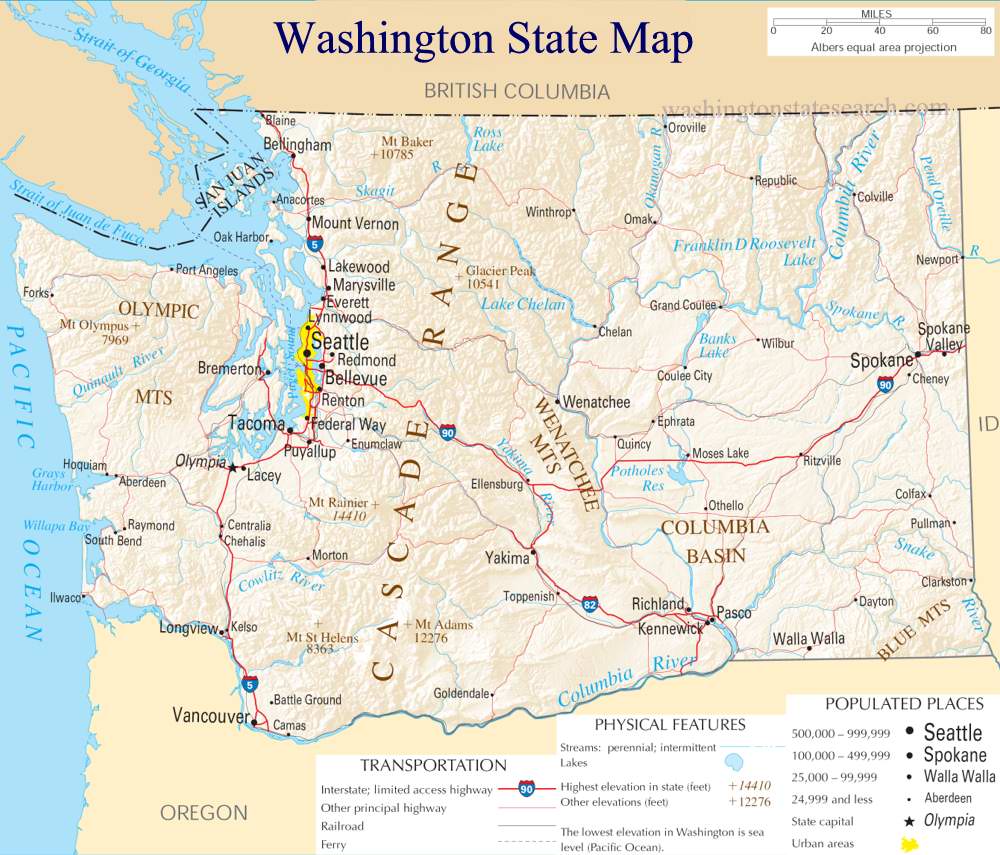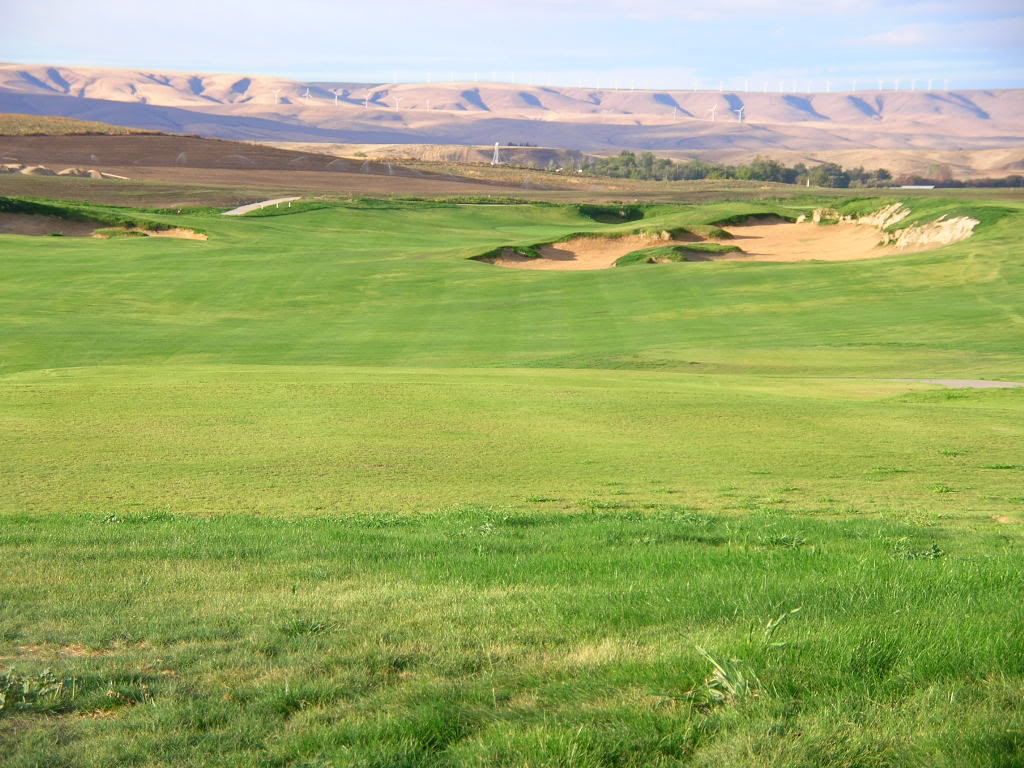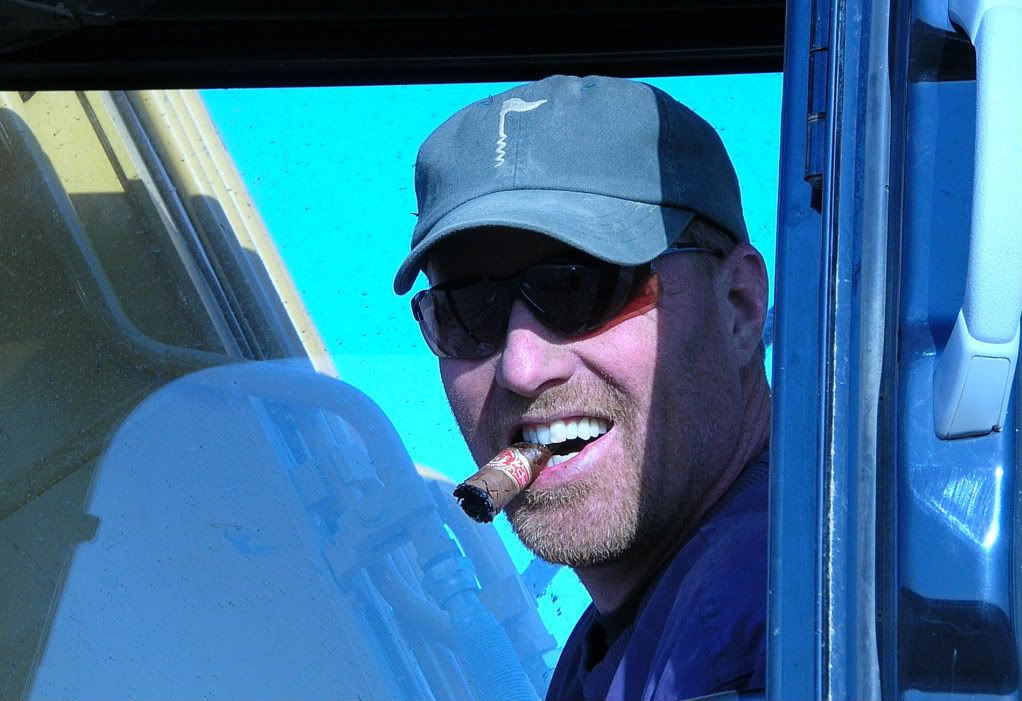Some of you know that there's been a golf course being built near Walla Walla, in the southeast corner of Washington State. It's been under the radar of golf construction news but that's probably going to change by next Spring. It's called Wine Valley - yes, rhymes with Pine - and is slated to open in 2009; exact date pending. Walla Walla is a historic American town that, in addition to being famous for its Sweet onions, the fictitious home of the Acme Company (of Roadrunner/Coyote fame), a location travelled through by the Corps of Discovery of Lewis and Clark, home of a federal penitentiary, and claims over 100 thriving wineries. It also has its own airport to help in its burgeoning tourism.
The geology of the area is bordered by the Blue Mountains with the immediate soil underneath comprised mostly of eolian loess that has blown in over several thousands of years into gentle but giant rolling hills. Amidst the formation of these lands came several floods that rushed down from Montana, appropriately called the Missoula Floods, when giant ice dams broke free periodically to release cataclysmic torrents unmatched in scale anywhere in the world. These floods brought in alien rocks, erratics, on ice bergs and carved sharply the Columbia River Gorge. Perhaps, most dramatically through the Wallula Gap, an area that runs through the border of Washington and Oregon. Though Walla Walla was not in the main blast of the flows it did receive backwater flooding.
See
http://hugefloods.com/ if you're interested in the lowdown.

The area where the golf course is located, about 10 miles west of WW, receives about 10 inches of rainfall per annum, and is in USGA climate zone #6. Though dry, it does receive some maritime air from the Pacific Ocean through the Columbia River Gorge, thus making it milder than areas just outside the valley. Winds can be strong throughout the Spring and Summer months, with the prevailing winds coming from the WSW. Sunrises and sunsets are remarkable with comfortable Summer evenings.
Horse Heaven Hills in Oregon above wheat.

The golf course is built upon what was a working alfalfa and wheat farm, and is irrigated from an aquifer with pumps, and surprisingly, the golf course will use 1/4 of the volume that the farm used. The greens are Bentgrass, with fairways and surrounds of a 70/30 fine fescue/bluegrass mix, and a four way fine fescue mix for rough, leading into mostly crested wheatgrass in the periphery. At this time, there is only one two foot tree (Western Juniper) on the property, and it's virtually out of play. There will be more trees planted but they'll be used very sparingly and sparsely. Reintroduction of natives of Big sagebrush (Artemesia tridentata), bitterbrush, rabbitbrush, smooth sumac, and others will be prevalent in the outlying areas. Native rushes, red-twigged dogwoods and water grass will edge lakes away from playable areas. Some willows
have already volunteered themselves on shorelines.
1st Fairway right

3rd Green from 10th green.

The short par 4, 4th Green from left hillside, (couldn't resist the old photo effect)

Approach to 15TH

Jay Kenyon "Red Leader" in 312 with Wine Valley logo hat.

Jay, I know what you're thinking about.
This project has been quite an adventure for this golf course hobbyist and I had a blast with a freewheelin' bunch of hardworking golf construction all stars. I feel lucky and blessed to have been a part of this creative group and I think I speak for all that we are proud to have built such a grand result. There is still work to do but the bones are in. I recommend to anybody whose life is somewhat in order to jump at the chance to help build a course. It may test your resolve at times, the hours are generally long, but I cannot imagine you'd have any regrets. I know I don't.
Hope you like the pictures. There should be more to follow within the next few days.